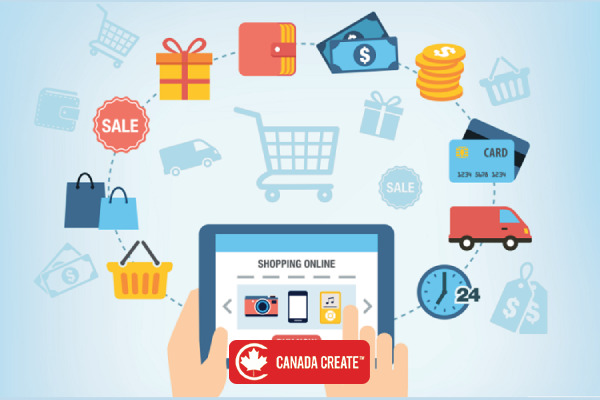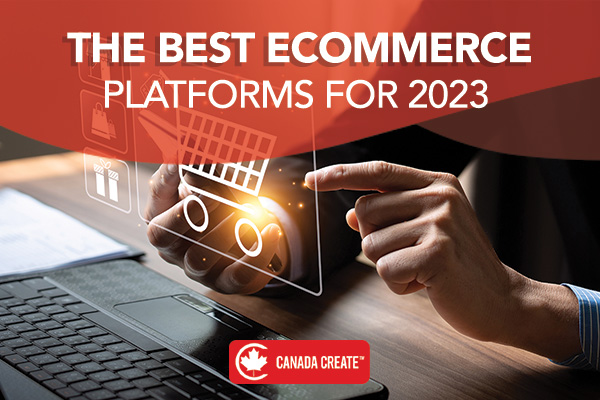As the world of online shopping continues to evolve, businesses are seeking the best eCommerce platforms to establish and grow their digital storefronts. With numerous options available, it’s crucial to identify the platforms that offer the right combination of features, flexibility, and scalability to meet the unique needs of your business. In this article, we will explore the best eCommerce platforms for 2023, highlighting their key features, benefits, and why they stand out in the competitive eCommerce landscape.
What Is an E-Commerce Platform?
An eCommerce platform is a software or online service that enables businesses to create and manage their online stores. It provides the necessary tools and features to showcase products, process payments, manage inventory, track orders, and handle other essential aspects of running an online business. An eCommerce platform acts as the foundation for building and operating an online store, allowing businesses to reach customers, sell products or services, and facilitate transactions securely and efficiently.
Need an eCommerce website for your business? Canada Create offers quality web design in Toronto aiming to boost your business and revenue.
Best eCommerce Platform in 2023
- Wix: Unparalleled drag-and-drop editor for seamless website creation
- Shopify: Unrivaled AI functionality for enhanced e-commerce operations
- Shift4Shop: Exceptional free e-commerce platform with extensive features
- Square Online: Optimal choice for seamless omnichannel selling experiences
- BigCommerce: Remarkable platform for boosting sales and maximizing growth
- Weebly: Unbeatable value with a comprehensive set of features
- Squarespace: Ideal choice for beginners seeking a user-friendly platform
- Ecwid: Unmatched option with no transaction fees for seamless selling
- WooCommerce: Unparalleled free WordPress plugin for robust e-commerce
- CoreCommerce: Premier choice for integrating e-commerce into preexisting websites

How To Choose the Best E-Commerce Platform
Choosing the best eCommerce platform for your business requires careful consideration of several factors. Here are some key steps to help you make an informed decision:
-
Define your business needs:
Identify your specific requirements, such as product range, target audience, scalability, and integration with other systems.
-
Consider your budget:
Determine your budget for the eCommerce platform, including setup costs, transaction fees, and ongoing maintenance expenses.
-
Evaluate features and customization options:
Look for platforms that offer essential features like secure payment gateways, mobile responsiveness, inventory management, SEO capabilities, and flexibility to customize the design.
-
Assess scalability and growth potential:
Ensure the platform can accommodate your business’s future growth and handle increased traffic and sales volume.
-
Review security measures:
Verify that the platform provides robust security features, such as SSL certificates, PCI compliance, and regular updates to protect customer data.
-
Check integration capabilities:
Determine if the platform can integrate with other tools and systems you use, such as CRM software, email marketing platforms, or analytics tools.
-
Research customer support and resources:
Look for platforms that offer reliable customer support, documentation, tutorials, and an active community to assist you in case of any issues or questions.
-
Read reviews and seek recommendations:
Research and read user reviews and seek recommendations from other businesses or industry experts to gain insights and make an informed decision.
What are the Essential E-Commerce Features?
When choosing an eCommerce platform, it’s important to consider the essential features that will support the smooth operation of your online store. Here are some key features to look for:
-
Product Management:
The ability to easily add, categorize, and manage your products, including descriptions, images, inventory tracking, and variations.
-
Shopping Cart and Checkout:
A user-friendly shopping cart that allows customers to add products, and view their cart, and a secure checkout process with multiple payment options.
-
Payment Gateway Integration:
Seamless integration with popular payment gateways to accept credit cards, digital wallets, and other payment methods securely.
-
Mobile Responsiveness:
A responsive design that ensures your online store looks and functions well on various mobile devices, providing a smooth mobile shopping experience.
-
SEO and Marketing Tools:
Built-in SEO features, such as customizable URLs, meta tags, and sitemaps, as well as marketing tools like discounts, coupons, and email marketing integrations.
-
Order Management:
Efficient order processing, tracking, and management, including order status updates, shipping integration, and customer notifications.
-
Security Measures:
Robust security features such as SSL certificates, PCI compliance, and data encryption to protect customer information and ensure secure transactions.
-
Analytics and Reporting:
Built-in analytics and reporting tools to track sales, customer behavior, conversion rates, and other key metrics to make informed business decisions.
-
Customer Reviews and Ratings:
The ability for customers to leave reviews and ratings for products helps build trust and influence purchasing decisions.
-
Integration Capabilities:
The flexibility to integrate with third-party tools and services such as CRM systems, email marketing platforms, and social media channels.
Types of E-commerce Platforms
E-commerce platforms can be broadly categorized into two types: self-hosted and cloud-based.
Self-hosted platforms require you to set up and manage your hosting environment, giving you complete control over your online store’s infrastructure and customization options. Examples include WooCommerce and Magento.
On the other hand, cloud-based platforms are hosted on the provider’s servers, eliminating the need for self-hosting. They offer a more user-friendly approach with built-in features, easy setup, and ongoing maintenance. Examples include Shopify and BigCommerce.
Both options have their advantages and considerations, so it’s important to assess your business requirements, technical expertise, and budget before choosing the most suitable type of e-commerce platform for your needs.
Self-hosted vs. Cloud-based: Pros and Cons
| Self-hosted Platforms | Cloud-based Platforms | |
| Pros | Full control over customization | Easy setup and maintenance |
| Scalability and flexibility | No need for self-hosting | |
| Ability to handle high-traffic volumes | Built-in features and integrations | |
| Lower long-term costs | Regular updates and security patches | |
| Extensive customization options | Technical support and assistance | |
| Cons | Requires technical knowledge and skills | Limited control over infrastructure |
| Higher initial setup and maintenance | Monthly subscription fees | |
| Need to manage hosting and updates | Limited customization options | |
| Potential security vulnerabilities | Transaction fees may apply | |
| May require additional development |
How Much Does an E-Commerce Platform Cost?
The cost of an eCommerce platform can vary depending on various factors such as the platform provider, the features and capabilities offered, the size and scale of your business, and any additional services or customizations required. Here are some common cost considerations:
-
Platform Subscription:
Many eCommerce platforms offer tiered pricing plans based on the features and support level you need. Costs can range from a few dollars per month for basic plans to hundreds of dollars per month for enterprise-level plans.
-
Transaction Fees:
Some platforms charge a transaction fee or take a percentage of each sale made through your online store. This fee can vary based on the platform and the volume of sales.
-
Add-ons and Extensions:
Certain features or integrations may require additional costs, such as premium themes, plugins, or third-party services for specific functionality.
-
Customization and Development:
If you require extensive customization or development work to tailor the platform to your specific needs, there may be additional costs associated with hiring developers or agencies.
-
Hosting and Domain:
Consider the cost of hosting your online store and acquiring a domain name, which can be separate expenses from the platform itself.
-
Maintenance and Support:
Some platforms offer ongoing maintenance and support services at an additional cost, ensuring regular updates, security patches, and technical assistance.
Conclusion
In conclusion, the world of e-commerce continues to evolve, and choosing the best platform for your business in 2023 is crucial for success. With a multitude of options available, it’s essential to consider factors such as features, scalability, customization, security, and pricing. Platforms like WooCommerce, Shopify, Magento, and BigCommerce have emerged as leaders in the industry, offering robust solutions for businesses of all sizes. Ultimately, the best e-commerce platform for 2023 will depend on your specific needs, goals, and resources. Take the time to evaluate and compare platforms to find the perfect fit that will empower your online business and drive growth in the dynamic e-commerce landscape.
FAQs
- What is the future of e-commerce in 2023?
The future of e-commerce in 2023 is expected to continue growing rapidly with advancements in technology and changing consumer behavior.
- Is eCommerce profitable in 2023?
Yes, e-commerce is projected to remain profitable in 2023 as online shopping continues to gain popularity.
- How to grow ecommerce business in 2023?
To grow an e-commerce business in 2023, focus on enhancing customer experience, leveraging data analytics, optimizing marketing strategies, and expanding into new markets or channels.






